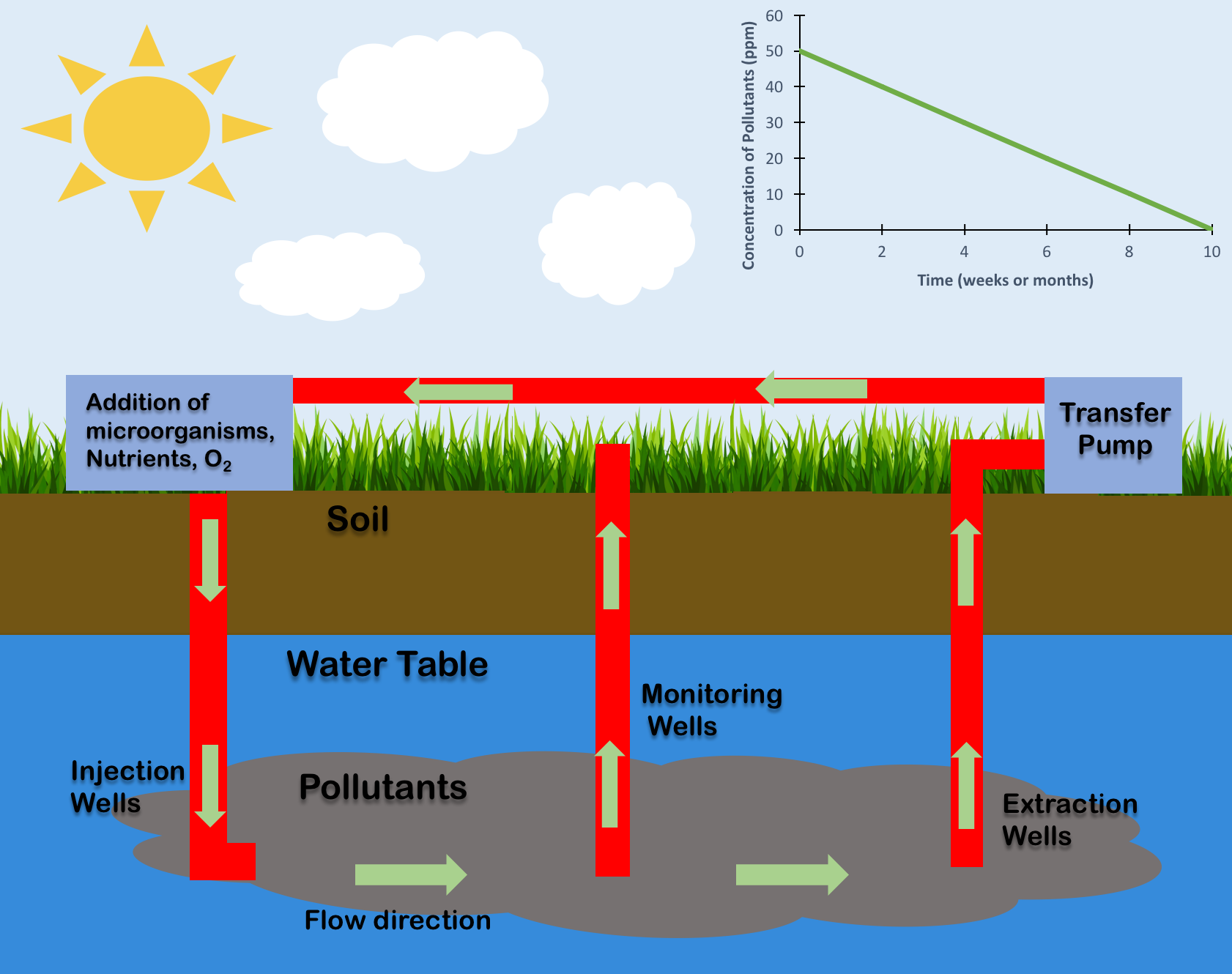|
Small Business Liability Relief And Brownfields Revitalization Act
The Small Business Liability Relief and Brownfields Revitalization Act (, 115 stat. 2356, "the Brownfields Law") was signed into law by President George W. Bush on January 11, 2002. Brownfields are defined as, "A former industrial or commercial site where future use is affected by real or perceived environmental contamination." The Brownfields Law amended the Comprehensive Environmental Response, Compensation, and Liability Act (CERCLA or Superfund) by providing funds to assess and clean up brownfields, clarifying CERCLA liability protections, and providing funds to enhance state and tribal response programs. Other related laws and regulations impact brownfields cleanup and reuse through financial incentives and regulatory requirements. An Executive Take The Small Business Liability Relief and Brownfields Revitalization Act was a response to the 1980 act entitled The Superfund, which forced industries to pay for their own toxic spills and general pollution. President Bush cited in h ... [...More Info...] [...Related Items...] OR: [Wikipedia] [Google] [Baidu] |
Brownfields
In urban planning, brownfield land is any previously developed land that is not currently in use. It may be potentially contaminated, but this is not required for the area to be considered brownfield. The term is also used to describe land previously used for industrial or commercial purposes with known or suspected pollution including soil contamination due to hazardous waste. Examples sites include abandoned factories, landfills, dry cleaning establishments and gas stations. Typical contaminants include hydrocarbon spillages, solvents and pesticides, as well as heavy metals like lead, tributyl tins and asbestos. Many contaminated brownfield sites sit unused for decades as involuntary parks because cleaning cost is more than land worth after redevelopment. Previously unknown underground wastes can increase the cost for study and clean-up. Acquisition, adaptive re-use, and disposal of a brownfield site requires advanced and specialized appraisal analysis techniques. Reme ... [...More Info...] [...Related Items...] OR: [Wikipedia] [Google] [Baidu] |
George W
George Walker Bush (born July 6, 1946) is an American politician who served as the 43rd president of the United States from 2001 to 2009. A member of the Republican Party, Bush family, and son of the 41st president George H. W. Bush, he previously served as the 46th governor of Texas from 1995 to 2000. While in his twenties, Bush flew warplanes in the Texas Air National Guard. After graduating from Harvard Business School in 1975, he worked in the oil industry. In 1978, Bush unsuccessfully ran for the House of Representatives. He later co-owned the Texas Rangers of Major League Baseball before he was elected governor of Texas in 1994. As governor, Bush successfully sponsored legislation for tort reform, increased education funding, set higher standards for schools, and reformed the criminal justice system. He also helped make Texas the leading producer of wind powered electricity in the nation. In the 2000 presidential election, Bush defeated Democratic incum ... [...More Info...] [...Related Items...] OR: [Wikipedia] [Google] [Baidu] |
Comprehensive Environmental Response, Compensation, And Liability Act
Superfund is a United States federal environmental remediation program established by the Comprehensive Environmental Response, Compensation, and Liability Act of 1980 (CERCLA). The program is administered by the Environmental Protection Agency (EPA). The program is designed to investigate and clean up sites contaminated with hazardous substances. Sites managed under this program are referred to as "Superfund" sites. There are 40,000 federal Superfund sites across the country, and approximately 1,300 of those sites have been listed on the National Priorities List (NPL). Sites on the NPL are considered the most highly contaminated and undergo longer-term remedial investigation and remedial action (cleanups). The EPA seeks to identify parties responsible for hazardous substances released to the environment (polluters) and either compel them to clean up the sites, or it may undertake the cleanup on its own using the Superfund (a trust fund) and seek to recover those costs from the ... [...More Info...] [...Related Items...] OR: [Wikipedia] [Google] [Baidu] |
CERCLA
Superfund is a United States federal environmental remediation program established by the Comprehensive Environmental Response, Compensation, and Liability Act of 1980 (CERCLA). The program is administered by the Environmental Protection Agency (EPA). The program is designed to investigate and clean up sites contaminated with hazardous substances. Sites managed under this program are referred to as "Superfund" sites. There are 40,000 federal Superfund sites across the country, and approximately 1,300 of those sites have been listed on the National Priorities List (NPL). Sites on the NPL are considered the most highly contaminated and undergo longer-term remedial investigation and remedial action (cleanups). The EPA seeks to identify parties responsible for hazardous substances released to the environment (polluters) and either compel them to clean up the sites, or it may undertake the cleanup on its own using the Superfund (a trust fund) and seek to recover those costs from the ... [...More Info...] [...Related Items...] OR: [Wikipedia] [Google] [Baidu] |
Superfund
Superfund is a United States federal environmental remediation program established by the Comprehensive Environmental Response, Compensation, and Liability Act of 1980 (CERCLA). The program is administered by the United States Environmental Protection Agency, Environmental Protection Agency (EPA). The program is designed to investigate and clean up sites contaminated with hazardous substances. Sites managed under this program are referred to as "Superfund" sites. There are 40,000 federal Superfund sites across the country, and approximately 1,300 of those sites have been listed on the National Priorities List (NPL). Sites on the NPL are considered the most highly contaminated and undergo longer-term remedial investigation and remedial action (cleanups). The EPA seeks to identify parties responsible for hazardous substances released to the environment (polluters) and either compel them to clean up the sites, or it may undertake the cleanup on its own using the Superfund (a trust ... [...More Info...] [...Related Items...] OR: [Wikipedia] [Google] [Baidu] |
Public–private Partnership
A public–private partnership (PPP, 3P, or P3) is a long-term arrangement between a government and private sector institutions.Hodge, G. A and Greve, C. (2007), Public–Private Partnerships: An International Performance Review, Public Administration Review, 2007, Vol. 67(3), pp. 545–558 Typically, it involves private capital financing government projects and services up-front, and then drawing revenues from taxpayers and/or users over the course of the PPP contract. Public–private partnerships have been implemented in multiple countries and are primarily used for infrastructure projects. They have been employed for building, equipping, operating and maintaining schools, hospitals, transport systems, and water and sewerage systems. Cooperation between private actors, corporations and governments has existed since the inception of sovereign states, notably for the purpose of tax collection and colonization. However, contemporary "public-private partnerships" came into being ... [...More Info...] [...Related Items...] OR: [Wikipedia] [Google] [Baidu] |
Public–private Partnership
A public–private partnership (PPP, 3P, or P3) is a long-term arrangement between a government and private sector institutions.Hodge, G. A and Greve, C. (2007), Public–Private Partnerships: An International Performance Review, Public Administration Review, 2007, Vol. 67(3), pp. 545–558 Typically, it involves private capital financing government projects and services up-front, and then drawing revenues from taxpayers and/or users over the course of the PPP contract. Public–private partnerships have been implemented in multiple countries and are primarily used for infrastructure projects. They have been employed for building, equipping, operating and maintaining schools, hospitals, transport systems, and water and sewerage systems. Cooperation between private actors, corporations and governments has existed since the inception of sovereign states, notably for the purpose of tax collection and colonization. However, contemporary "public-private partnerships" came into being ... [...More Info...] [...Related Items...] OR: [Wikipedia] [Google] [Baidu] |
Total Petroleum Hydrocarbon
Total petroleum hydrocarbons (TPH) is a term used for any mixture of hydrocarbons that are found in crude oil. There are several hundred of these compounds, but not all occur in any one sample. Crude oil is used to make petroleum products, which can contaminate the environment. Because there are so many different chemicals in crude oil and in other petroleum products, it is not practical to measure each one separately. However, it is useful to measure the total amount of TPH at a site. Chemicals that occur in TPH include hexane, benzene, toluene, xylenes, naphthalene, and fluorene, other constituents of gasoline, jet fuels, mineral oil Mineral oil is any of various colorless, odorless, light mixtures of higher alkanes from a mineral source, particularly a distillate of petroleum, as distinct from usually edible vegetable oils. The name 'mineral oil' by itself is imprecise, ...s, and of other petroleum products. Petroleum Hydrocarbon ranges are monitored at various levels depe ... [...More Info...] [...Related Items...] OR: [Wikipedia] [Google] [Baidu] |
Volatile Organic Compounds
Volatile organic compounds (VOCs) are organic compounds that have a high vapour pressure at room temperature Colloquially, "room temperature" is a range of air temperatures that most people prefer for indoor settings. It feels comfortable to a person when they are wearing typical indoor clothing. Human comfort can extend beyond this range depending on .... High vapor pressure correlates with a low boiling point, which relates to the number of the sample's molecules in the surrounding air, a trait known as volatility (chemistry), volatility. VOCs are responsible for the odor of scents and perfumes as well as pollutants. VOCs play an important role in communication between animals and plants, e.g. attractants for pollinators, protection from predation, and even inter-plant interactions. Some VOCs are dangerous to human health or cause harm to the natural environment, environment. Human impact on the environment, Anthropogenic VOCs are regulated by law, especially indoors, where c ... [...More Info...] [...Related Items...] OR: [Wikipedia] [Google] [Baidu] |
Bioremediation
Bioremediation broadly refers to any process wherein a biological system (typically bacteria, microalgae, fungi, and plants), living or dead, is employed for removing environmental pollutants from air, water, soil, flue gasses, industrial effluents etc., in natural or artificial settings. The natural ability of organisms to adsorb, accumulate, and degrade common and emerging pollutants has attracted the use of biological resources in treatment of contaminated environment. In comparison to conventional physicochemical treatment methods bioremediation may offer considerable advantages as it aims to be sustainable, eco-friendly, cheap, and scalable. Most bioremediation is inadvertent, involving native organisms. Research on bioremediation is heavily focused on stimulating the process by inoculation of a polluted site with organisms or supplying nutrients to promote the growth. In principle, bioremediation could be used to reduce the impact of byproducts created from anthropogenic acti ... [...More Info...] [...Related Items...] OR: [Wikipedia] [Google] [Baidu] |
2002 In The Environment
This is a list of notable events relating to the environment in 2002. They relate to environmental law, conservation, environmentalism and environmental issues. Events *The year 2002 was dedicated as the International Year of Ecotourism and Mountains. *The ASEAN Agreement on Transboundary Haze Pollution was signed between all ASEAN nations to reduce haze pollution in Southeast Asia. March *The Earth observation satellite Envisat is launched by the European Space Agency. * Native forest logging on public land ends in New Zealand. April *The Melbourne Principles for Sustainable Cities were drawn up in the Australian city of Melbourne. July *The Game and Feral Animal Control Act 2002 passes into law. It aims to manage and regulate the hunting of game in New South Wales in Australia. August *The World Summit on Sustainable Development, WSSD or Earth Summit 2002 took place in Johannesburg, South Africa, from 26 August to 4 September 2002. It was convened to discuss sustainable d ... [...More Info...] [...Related Items...] OR: [Wikipedia] [Google] [Baidu] |


.jpg)



